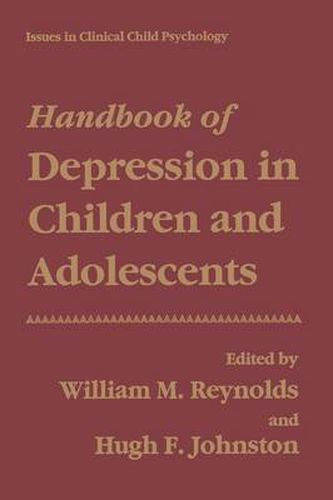Readings Newsletter
Become a Readings Member to make your shopping experience even easier.
Sign in or sign up for free!
You’re not far away from qualifying for FREE standard shipping within Australia
You’ve qualified for FREE standard shipping within Australia
The cart is loading…






This title is printed to order. This book may have been self-published. If so, we cannot guarantee the quality of the content. In the main most books will have gone through the editing process however some may not. We therefore suggest that you be aware of this before ordering this book. If in doubt check either the author or publisher’s details as we are unable to accept any returns unless they are faulty. Please contact us if you have any questions.
Anyone who has ever been close to a seriously depressed child has undoubtedly been affected by the youngster’s vulnerability, misery, and pain. Indeed, it is much like caring for a child who is in physical pain. For the child in the depths of depression, no activity is fun, nothing can be enjoyed, and no one can provide enough consolation or comfort. At times, the youngster may cry or whimper. There may be fits of defiance or rage and sometimes withdrawal into a numb, sullen silence. A child in this state tries the patience of parents and siblings. Remedies of every sort are tried, including gifts, punishments, bribes, lectures, pleading, and a host of others. Such efforts occasionally provide temporary relief, but more often they seem to make matters worse. Commonly, there is an emotional wall of anger and frustration between a depressed child and other fumily members that may inevitably lead to further isolation and withdrawal. If too much time passes without their being helped, many depressed children and adolescents come to believe that suicide offers the only real relief for their pain. Currently, there is a Depression Awareness Week that includes free screening at participating health and mental health settings around the United States and is designed to identify depression in adults, suggesting that society’s awareness of depression and psychiatric disorders is focused to a large extent on adults.
$9.00 standard shipping within Australia
FREE standard shipping within Australia for orders over $100.00
Express & International shipping calculated at checkout
This title is printed to order. This book may have been self-published. If so, we cannot guarantee the quality of the content. In the main most books will have gone through the editing process however some may not. We therefore suggest that you be aware of this before ordering this book. If in doubt check either the author or publisher’s details as we are unable to accept any returns unless they are faulty. Please contact us if you have any questions.
Anyone who has ever been close to a seriously depressed child has undoubtedly been affected by the youngster’s vulnerability, misery, and pain. Indeed, it is much like caring for a child who is in physical pain. For the child in the depths of depression, no activity is fun, nothing can be enjoyed, and no one can provide enough consolation or comfort. At times, the youngster may cry or whimper. There may be fits of defiance or rage and sometimes withdrawal into a numb, sullen silence. A child in this state tries the patience of parents and siblings. Remedies of every sort are tried, including gifts, punishments, bribes, lectures, pleading, and a host of others. Such efforts occasionally provide temporary relief, but more often they seem to make matters worse. Commonly, there is an emotional wall of anger and frustration between a depressed child and other fumily members that may inevitably lead to further isolation and withdrawal. If too much time passes without their being helped, many depressed children and adolescents come to believe that suicide offers the only real relief for their pain. Currently, there is a Depression Awareness Week that includes free screening at participating health and mental health settings around the United States and is designed to identify depression in adults, suggesting that society’s awareness of depression and psychiatric disorders is focused to a large extent on adults.